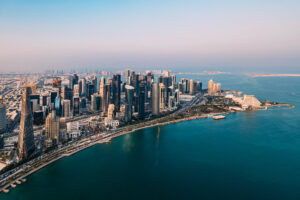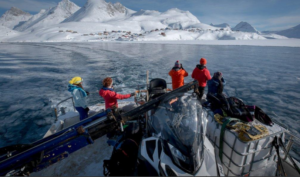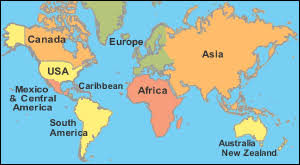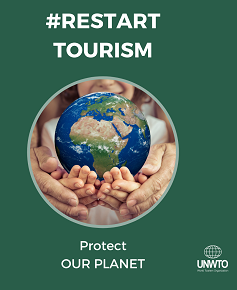Over 70% of glacier volume in Everest region could be lost by 2100
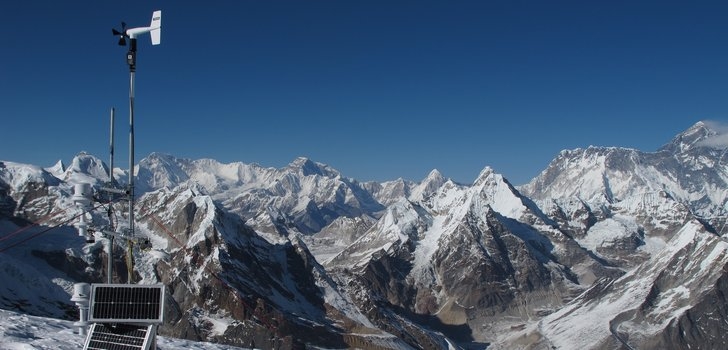
TravelBizNews —-
Kathmandu : A team of researchers in Nepal, France and the Netherlands have found Everest glaciers could be very sensitive to future warming, and that sustained ice loss through the 21st century is likely.
If greenhouse-gas emissions continue to rise, glaciers in the Everest region of the Himalayas could experience dramatic change in the decades to come according to a research published in The Cryosphere, an open access journal of the European Geosciences Union (EGU).
“The signal of future glacier change in the region is clear: continued and possibly accelerated mass loss from glaciers is likely given the projected increase in temperatures,” says Joseph Shea, a glacier hydrologist at the International Centre for Integrated Mountain Development (ICIMOD), Kathmandu, Nepal, and leader of the study.
The glacier model used by Shea and his team shows that glacier volume could be reduced between 70% and 99% by 2100. The results depend on how much greenhouse-gas emissions continue to rise, and on how this will affect temperature, snowfall and rainfall in the area.
“Our results indicate that these glaciers may be highly sensitive to changes in temperature, and that increases in precipitation are not enough to offset the increased melt,” says Shea. Increased temperatures will not only increase the rates of snow and ice melt, but can also result in a change of precipitation from snow to rain at critical elevations, where glaciers are concentrated. Together, these act to reduce glacier growth and increase the area exposed to melt.
Glaciers in High Mountain Asia, a region that includes the Himalayas, contain the largest volume of ice outside the polar regions. The team studied glaciers in the Dudh Kosi basin in the Nepal Himalaya, which is home to some of the world’s highest mountain peaks, including Mt Everest, and to over 400 square kilometres of glacier area. “Apart from the significance of the region, glaciers in the Dudh Kosi basin contribute meltwater to the Kosi River, and glacier changes will affect river flows downstream,” says Shea.
Changes in glacier volume can impact the availability of water, with consequences for agriculture and hydropower generation. While increased glacier melt initially increases water flows, ongoing retreat leads to reduced meltwater from the glaciers during the warmer months, with greatest impact for the local populations before the monsoon when rainfall is scarce. Glacier retreat can also result in the formation and growth of lakes dammed by glacial debris. Avalanches and earthquakes can breach the dams, causing catastrophic floods that can result in river flows 100 times greater than normal in the Kosi basin.
To find out how glaciers in the region will evolve in the future, the team started by using field observations and data from local weather stations to calibrate and test a model of glacier change over the past 50 years. “To examine the sensitivity of modelled glaciers to future climate change, we then applied eight temperature and precipitation scenarios to the historical temperature and precipitation data and tracked how glacier areas and volumes responded,” says study co-author Walter Immerzeel of Utrecht University in the Netherlands.
Part of the glacier response is due to changes in the freezing level, the elevation where mean monthly temperatures are 0°C. “The freezing level currently varies between 3200 m in January and 5500 m in August. Based on historical temperature measurements and projected warming to the year 2100, this could increase by 800–1200m,” says Immerzeel. “Such an increase would not only reduce snow accumulations over the glaciers, but would also expose over 90% of the current glacierized area to melt in the warmer months.”
The researchers caution, however, that the results published in The Cryosphere should be seen as a first approximation to how Himalayan glaciers will react to increasing temperatures in the region. Patrick Wagnon, a visiting scientist at ICIMOD and glaciologist at the Institut de Recherche pour le Développement in Grenoble, France, says: “Our estimates need to be taken very cautiously, as considerable uncertainties remain.” For example, the model simplifies glacier movements, which impact how glaciers respond to increases in temperature and precipitation.
But the researchers stress in the paper that “the signal of future glacier change in the region is clear and compelling” and that decreases in ice thickness and extent are expected for “even the most conservative climate change scenario.”
The research team is composed of J.M. Shea (International Centre for Integrated Mountain Development [ICIMOD], Kathmandu, Nepal), W.W. Immerzeel (ICIMOD and Department of Physical Geography, Utrecht University, the Netherlands), P. Wagnon (ICIMOD and Laboratoire d’étude des transferts en hydrologie, Institut de Recherche pour le Développement, Grenoble, France), C. Vincent (Laboratoire de Glaciologie et Geophysique de l’Environnement, CNRS, Grenoble, France) and S. Bajracharya (ICIMOD). – ICIMOD
For more info : www.the-cryosphere.net
May 28, 2015



